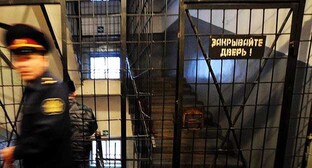
27 November 2020, 12:20
Researches highlight problem of guarding Armenian monuments in Nagorno-Karabakh
Most of the historical monuments in Nagorno-Karabakh are related to the Armenian culture; there are much fewer Muslim monuments, the experts interviewed by the "Caucasian Knot" have noted.
The "Caucasian Knot" has reported that on November 16, scientists, activists and journalists appealed to Russian President, Vladimir Putin, with a request to protect cultural and historical monuments in Nagorno-Karabakh. The Azerbaijani authorities also called on UNESCO to take the Islamic and Christian cultural monuments in Nagorno-Karabakh under guard.
Armen Kazaryan, Director of the Scientific Research Institute of Architecture Theory and History and Urban Planning, told the "Caucasian Knot" correspondent that there are a number of cultural monuments in Nagorno-Karabakh, but the most significant of them are monuments of the Armenian culture.
In Mr Kazaryan's opinion, the absence of large Muslim monuments in these territories is due to the fact that "for the Muslim world it was a remote province, while for Armenians it was either a remote province or a cultural centre."
Among the most famous monuments, he named the ancient city of Tigranakert in the Agdam District; the Tsitsernavank Monastery with a temple built in the 5th-6th centuries in the Lachin District; the ruins of the 6th century Okhta Drni Church in Mokhrenis in the Gadrut District; the Dadivank Monastery of the 9th century in the Kalbadjar District; and the Gandzasar Monastery of the 13th century.
Sergey Arutyunov, the head of the Caucasus Division at the Institute of Ethnology and Anthropology of the Russian Academy of Sciences, has also noted that there are few Muslim monuments in Nagorno-Karabakh, since Islam penetrated this region quite late, not earlier than the 15th-16th centuries. "The main Muslim monuments of the region are concentrated in the coastal strip," he said. Among the Armenian monuments, he singled out the Gandzasar Monastery, noting that it is one of the few surviving monastic complexes of the 13th century.
This article was originally published on the Russian page of 24/7 Internet agency ‘Caucasian Knot’ on November 27, 2020 at 03:49 am MSK. To access the full text of the article, click here.
Author: Semyon Charny Source: CK correspondent




